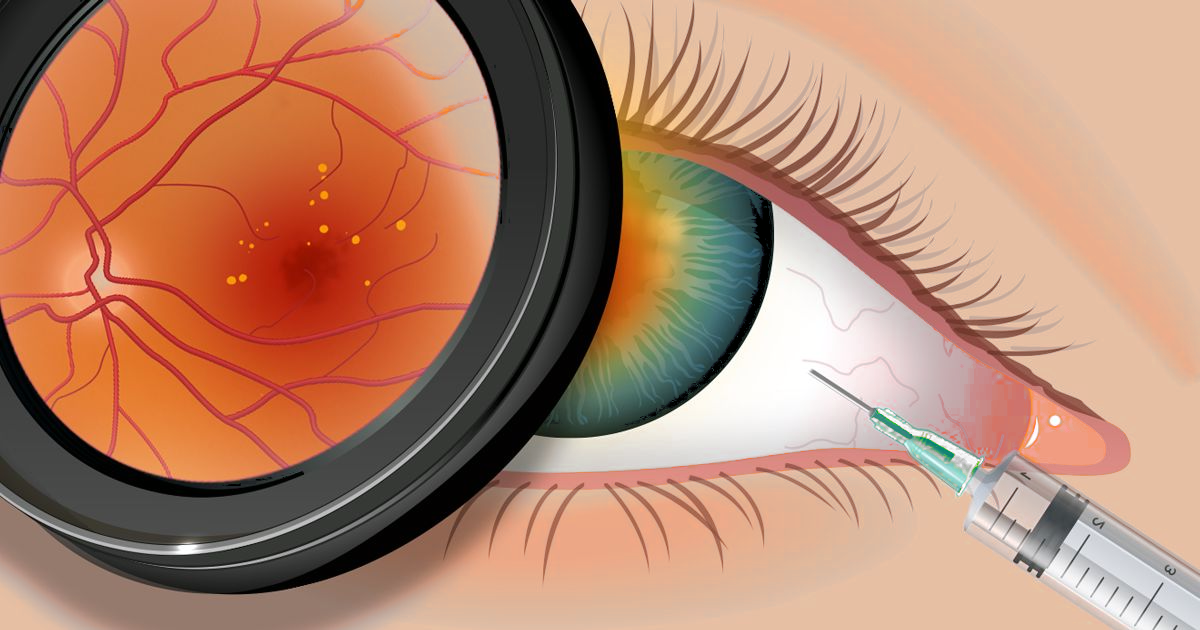As the name implies, the intravitreal injection technique involves a shot of a drug directly inside the vitreous of the eye by an Eye doctor in Islamabad. This type of technique is used to treat certain conditions of the retina and offers direct access to the drug to the neurosensory layer of the eye. Read on to know more about intravitreal injections, their types, indications, procedure risks, and outlook.
What are intravitreal injections?
New vessels grow in response to decreased blood supply and hypoxia, as seen in uncontrolled diabetes and hypertension. These new blood vessels are fragile and can bleed and leak, causing hemorrhages and swelling inside the retina. To decrease the production of these new blood vessels, drugs called anti-vascular endothelial growth factors (anti-VEGF) are given in the intravitreal space.
Anti-vascular endothelial growth factor intravitreal injections have emerged as the new standard of treatment for patients with macular edema and hemorrhage secondary to chronic conditions like diabetes. According to experts like Andrew J. Barmeier, M.D., an ophthalmologist at Mayo Clinic, there is strong clinical evidence for the use of these agents. A number of conditions can be treated with intravitreal injections, as will be discussed shortly.
The benefits of intravitreal injections include improvement in vision and prevention of deterioration of vision. Intravitreal injections help to slow the progression of diseases like diabetic retinopathy and retinal vein occlusion which are ongoing systemic conditions with effects on the eyes.
What diseases do intravitreal injections treat?
Intravitreal injections help to treat:
- Age-related macular degeneration with new vessel formation (Neovascular AMD)
- Retinal vein occlusion
- Diabetic macular edema
- Proliferative or non-proliferative diabetic retinopathy
- Endophthalmitis
- Cystoid macular edema
- Uveitis
- Choroidal neovascular membrane
What is the procedure involved in intravitreal injections?
- The procedure starts with numbing of the involved eye. For this purpose, topical medication is mostly used. The choice of anesthesia—mostly tetracaine or proparacaine—depends on the treating physician.
- Retrobulbar block is applied in case of inflammation of the eye such as severe endophthalmitis in which a vitreous tap may also be needed.
- Following anesthesia, the patient is put in a supine position with neck support. And a speculum is used to keep the eyelids open during the procedure.
- Thereafter, ophthalmic solutions like povidone-iodine is used to clean the eyelids and the eye to make the surface as sterile as possible. This is a very important step in the procedure as it reduces the risk of postop endophthalmitis. Treatment with pre-op antibiotics is also based on the surgeon’s preference. Most retina specialists do not pre-treat, but post-procedure antibiotics are the norm.
- The site for intravitreal injections is either inferotemporal or superotemporal. Both sites can be used. The patient is then asked to look in a particular gaze depending on the chosen site of the surgeon.
- Due to risk of contamination with oral flora-related endophthalmitis, a healthcare providers should not talk or sneeze during the whole process of preparation and administration of the injection. Wearing a surgical mask can help reduce the transmission of bacteria.
- The patient is asked to look in the direction away from the injection site and then a short 30g needle is injected in about half length. On the other hand, the plunger is pushed down. The needle is not moved while it is in the eye.
- As the needle is removed, the injection site is covered with an applicator having a cotton tip.
- After the procedure, the eye is washed again with a poviodine-iodine solution.
- In case a large amount of medication is injected, there is a risk of raised intraocular pressure. In that case, paracentesis is done, especially in people already diagnosed with glaucoma.
- To decrease the chance of irritation, the iodine solution is carefully washed off.
What are the risks of intravitreal injections?
As with any procedure, there are certain risks with intravitreal injections. These include:
- Pain
- Increased watering in the eyes, especially in the setting of chronic dry eyes, infection and corneal abrasion
- Retinal detachment or tears
- Secondary cataract
- Subconjunctival bleeding
- Vitreous hemorrhage
- Infection of the eye
- Uveitis
- Increased intraocular pressure
- Optic nerve damage
- Loss of vision
- Loss of eye secondary to severe infection may occur without management from Best Eye Specialist in Rawalpindi.
